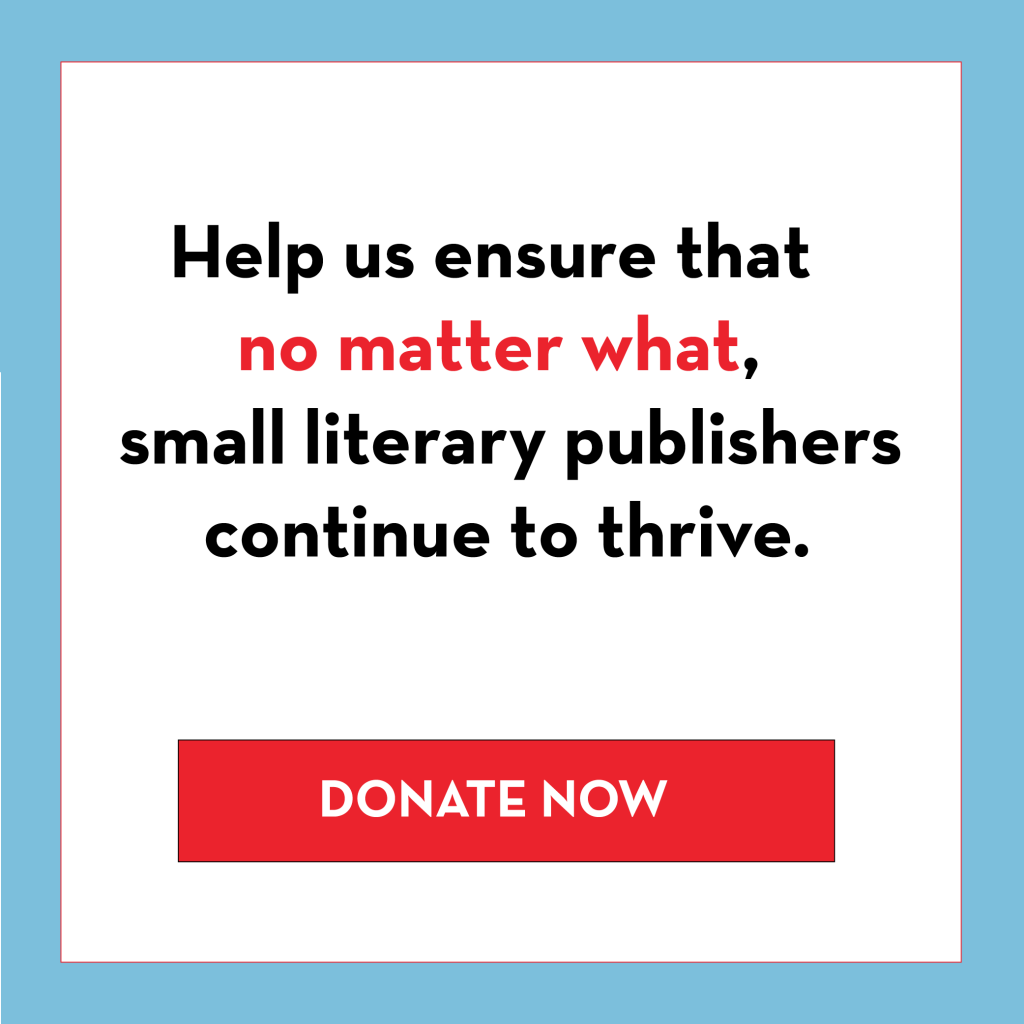We spoke with CJ Evans, the editorial director of Two Lines Press, in this installment of the CLMP Member Spotlight series.
What is the history behind Two Lines Press? When was it founded and what is your mission? What about Two Lines journal? How are the press and the literary magazine related?
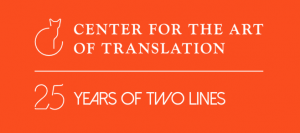 Two Lines Press put out our first title in 2013 as an extension of Two Lines journal, which has been publishing since 1994. The journal has always been focused on the art of translation and the translator as a working artist, and it’s the cornerstone of everything we’ve done. We were getting submissions of amazing international authors for the journal, and we thought it was ridiculous that these authors didn’t have books coming out in the U.S.—so, we decided to start a press to publish them. Many authors we’ve done multiple books from first came to our attention through the journal, like Elvira Navarro, Wolfgang Hilbig, and Naja Marie Aidt.
Two Lines Press put out our first title in 2013 as an extension of Two Lines journal, which has been publishing since 1994. The journal has always been focused on the art of translation and the translator as a working artist, and it’s the cornerstone of everything we’ve done. We were getting submissions of amazing international authors for the journal, and we thought it was ridiculous that these authors didn’t have books coming out in the U.S.—so, we decided to start a press to publish them. Many authors we’ve done multiple books from first came to our attention through the journal, like Elvira Navarro, Wolfgang Hilbig, and Naja Marie Aidt.
The mission of the press is to publish work we feel is in conversation with, but roughens and extends the borders of, contemporary American literature. Essentially: to publish really great books by great authors in great translations and at no point qualify them because the books are translated. And we also want to make sure that we’re supporting them as best we can—investing in great design, printing, marketing, and publicity. Of course, the best explanation of what a publisher does is their books, and I think books like Jazmina Barrera’s On Lighthouses, translated by Christina MacSweeney, or Lake Like a Mirror, by Ho Sok Fong and translated by Natascha Bruce, speak for themselves, and for us.
In addition to Two Lines, the Center for the Art of Translation also offers educational programs and events. What is Poetry Inside Out? Why is it important for students to practice the art of translation?
Poetry Inside Out is an education program that teaches kids literacy skills using a translation practice. Translation requires the deepest form of reading, and also an acknowledgement that literature and language are malleable—who you are and the choices you make while reading inflect that reading. Translating poetry allows kids to get together in groups and really discuss language on the level of syntax, word choice, and grammar (even if they aren’t using these words)—essential tools for understanding and reasoning that go beyond the usual reading comprehension curriculum. The program began here in the Bay Area, where there are a lot of students for whom English is a second language, and the program is also wonderful because it encourages these students, who have often been told repeatedly to focus only on English, to share and celebrate their expertise in their other language.
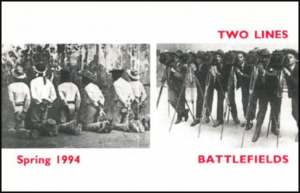 We also do events with translators and international writers here in the Bay Area in our events series Two Voices, having hosted dozens of authors and translators like Don Mee Choi, Lydia Davis, and Yoshimasu Gozo and Forrest Gander. Obviously, like everyone, we’re figuring out what the events series looks like going forward, but one advantage of going online is that people can attend from anywhere. We recently did an event in partnership with Point Reyes Books with Jazmina Barrera talking about On Lighthouses from Mexico City with Philip Hoare, who had just returned from his dawn swim in the ocean off the coast of Great Britain, to audience members from all over the world—it felt like a weird but perhaps hopeful convergence.
We also do events with translators and international writers here in the Bay Area in our events series Two Voices, having hosted dozens of authors and translators like Don Mee Choi, Lydia Davis, and Yoshimasu Gozo and Forrest Gander. Obviously, like everyone, we’re figuring out what the events series looks like going forward, but one advantage of going online is that people can attend from anywhere. We recently did an event in partnership with Point Reyes Books with Jazmina Barrera talking about On Lighthouses from Mexico City with Philip Hoare, who had just returned from his dawn swim in the ocean off the coast of Great Britain, to audience members from all over the world—it felt like a weird but perhaps hopeful convergence.
Two Lines recently won two Firecracker Awards from CLMP—the Firecracker Award in Fiction, for They Will Drown in Their Mothers’ Tears by Johannes Anyuru and translated by Saskia Vogel, and the Firecracker Award in Magazines (General Excellence), for Two Lines journal. Why is it significant that work in translation was recognized in this way?
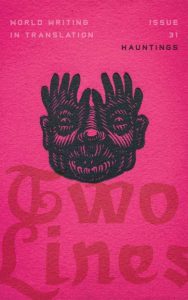
It’s very significant that work in translation has won the CLMP Firecracker Awards, and we are, of course, incredibly grateful to CLMP and to the judges! To even have Two Lines journal mentioned in the same breath as the powerhouse finalists for the general excellence award, means, hopefully, publishing is beginning to question its center. Maybe not as fast as we might like, but for a long time translation and works from beyond our borders were (and still largely are in many ways) considered something “else.” And it’s especially wonderful to win an award from an organization that represents the best, wildest, and most varied presses in the U.S.
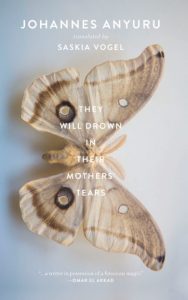 We’re living, I hope to think, in a moment of incredible imaginative potential. I think readers are becoming more comfortable inhabiting a world beyond our own perspective, and more comfortable putting ourselves in uncomfortable positions. I’m especially happy They Will Drown in Their Mother’s Tears won not only because it’s a book in translation, but also because it’s a book by a Swedish Muslim author that places a terrorist as its protagonist, daring (and succeeding) in making the reader side fully with her in this complex story. And the book—in very human terms—allows the reader to question the West’s entire shifting and self-centered morality. It’s a lush, sad, uncomfortable, and incredibly hopeful book that I love, and it was beautifully written by Johannes and was so beautifully translated by Saskia Vogel. That a publisher as small as us was even able to buy the rights to this book tells me there’s still a long way to go, but I’m honored to have been part of publishing it and so pleased that it was recognized.
We’re living, I hope to think, in a moment of incredible imaginative potential. I think readers are becoming more comfortable inhabiting a world beyond our own perspective, and more comfortable putting ourselves in uncomfortable positions. I’m especially happy They Will Drown in Their Mother’s Tears won not only because it’s a book in translation, but also because it’s a book by a Swedish Muslim author that places a terrorist as its protagonist, daring (and succeeding) in making the reader side fully with her in this complex story. And the book—in very human terms—allows the reader to question the West’s entire shifting and self-centered morality. It’s a lush, sad, uncomfortable, and incredibly hopeful book that I love, and it was beautifully written by Johannes and was so beautifully translated by Saskia Vogel. That a publisher as small as us was even able to buy the rights to this book tells me there’s still a long way to go, but I’m honored to have been part of publishing it and so pleased that it was recognized.
The Center for the Art of Translation celebrates its twentieth anniversary this year. What are your goals and dreams—for the Center as well as Two Lines Press and Two Lines journal—for the next few years?
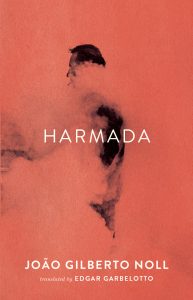 Ha! It’s a bit tough to anticipate what exactly will happen in the next few years. Like most people, we’re not making any grand plans for the next little bit. We do, however, have some amazing books coming up—this fall we’ve got a new one from Marie NDiaye called That Time of Year where she plays around with psychological horror in a way that reminds me of a weirder and rainier Shirley Jackson, translated as always by Jordan Stump, and a new novel, Harmada, from the Brazilian master João Gilberto Noll, translated by Edgar Garbelotto, which is essentially a primer on lifting yourself from the mud and finding meaning in a rudderless world. We also have Home, the second book in our new Calico Series, a collection of poems translated from Arabic that all evoke the everyday, the private—what’s common to all of us but also entirely individual.
Ha! It’s a bit tough to anticipate what exactly will happen in the next few years. Like most people, we’re not making any grand plans for the next little bit. We do, however, have some amazing books coming up—this fall we’ve got a new one from Marie NDiaye called That Time of Year where she plays around with psychological horror in a way that reminds me of a weirder and rainier Shirley Jackson, translated as always by Jordan Stump, and a new novel, Harmada, from the Brazilian master João Gilberto Noll, translated by Edgar Garbelotto, which is essentially a primer on lifting yourself from the mud and finding meaning in a rudderless world. We also have Home, the second book in our new Calico Series, a collection of poems translated from Arabic that all evoke the everyday, the private—what’s common to all of us but also entirely individual.
What are some other translation-focused magazines and presses you admire?
Whew—there are so many these days, which is so wonderful. Ugly Duckling and Archipelago and Action Books and Open Letter and Deep Vellum and Europa Editions and Charco Press and And Other Stories and Fitzcarraldo and Tilted Axis all need to be mentioned. I also love that there are more and more presses doing robust translation programs alongside and equal to their English work—like Coffee House, Transit Books, Argos, Feminist Press, and Milkweed, who have all taken up the rich cross-cultural lists of iconic places like Copper Canyon and New Directions. As for journals, I think they’re incredibly vibrant spaces and there are way too many to name, but The Common is doing amazing translations, as is the Arkansas International, and always Words Without Borders.
